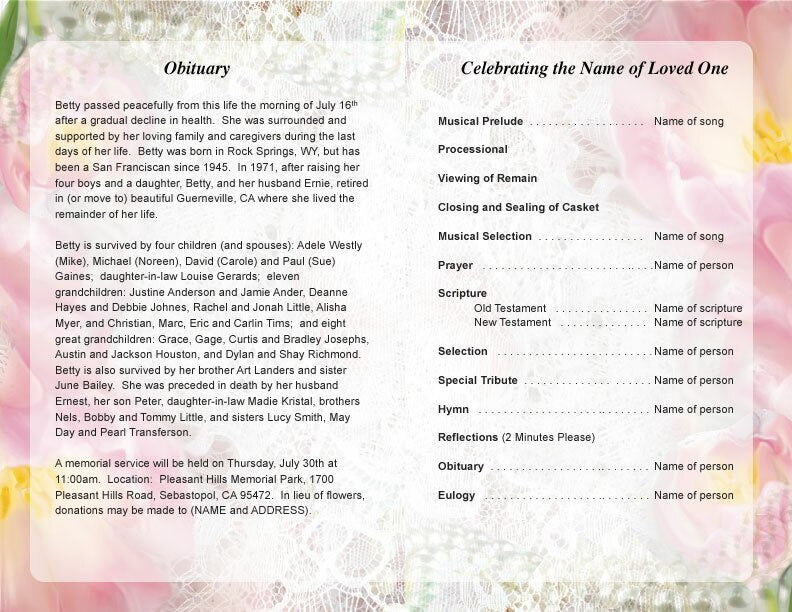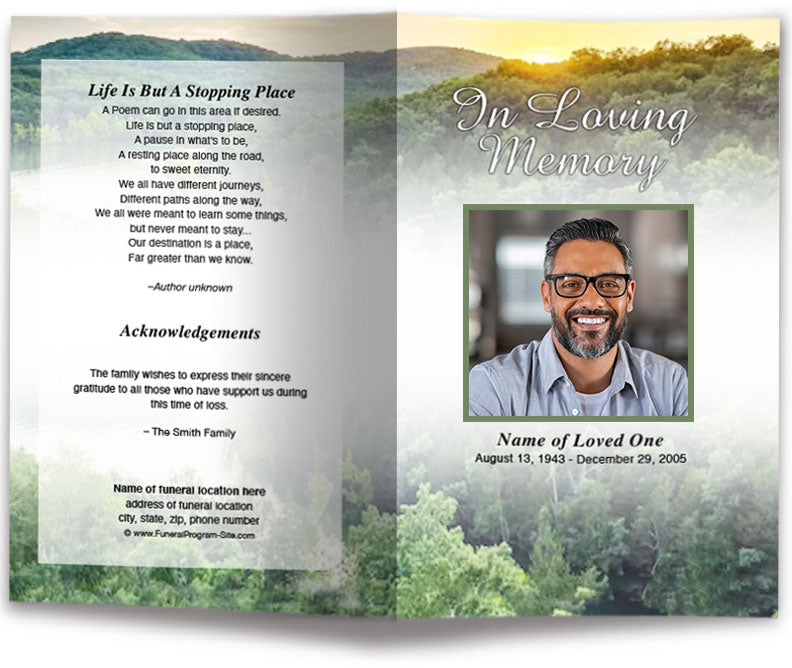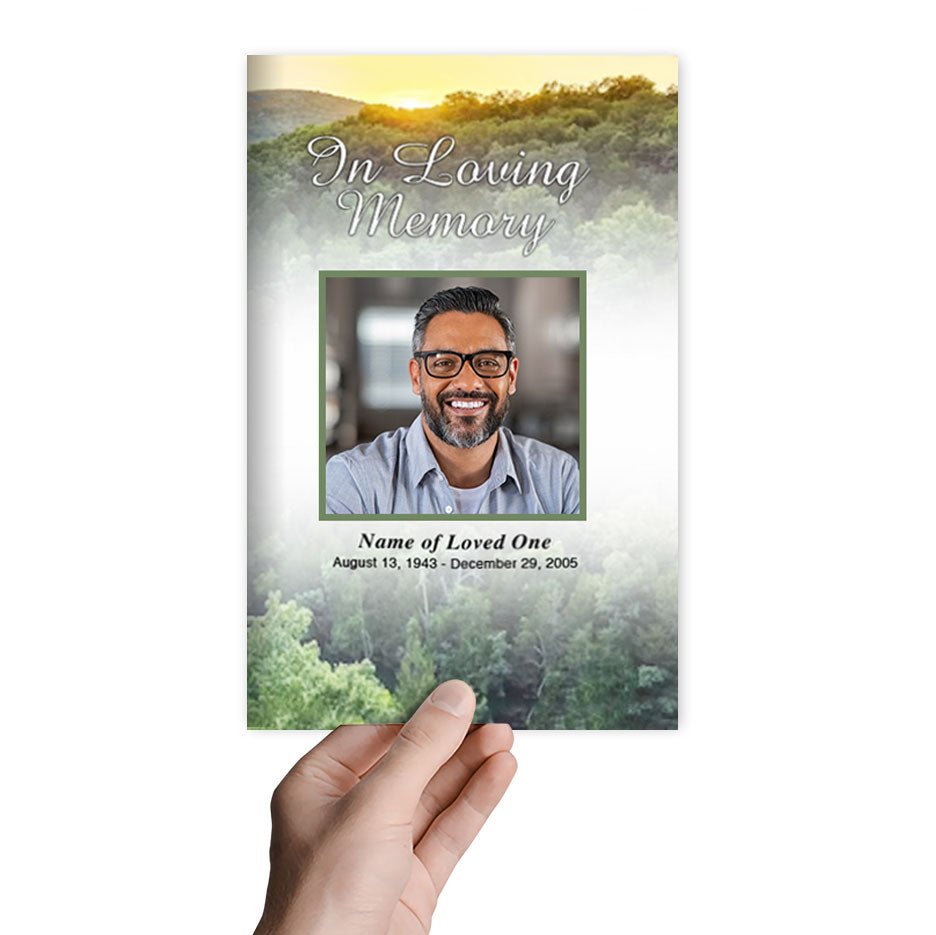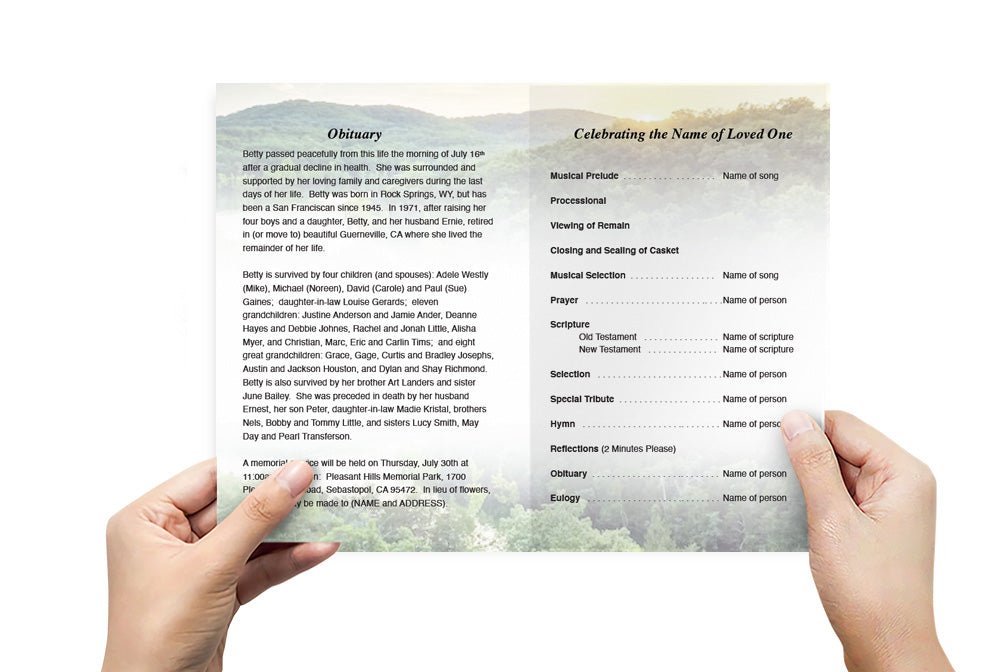How Do the Funeral Program Templates Handle Incorporating Unique Personal Memories?

Templates That Adapt to Your Loved One’s Story
Every life is filled with moments that matter—some profound, some simple, but all worth remembering. When it comes time to create a funeral program, incorporating these unique personal memories can feel like a daunting task. Fortunately, funeral program templates offered by The Funeral Program Site are specifically designed to make that process easier and more meaningful.
These templates go beyond providing a basic structure; they offer flexibility in layout, format, and content areas so families can tell the full story of their loved one’s life. Whether you’re working with a traditional bifold or a multi-page booklet, the templates include customizable sections that can hold favorite memories, milestones, shared anecdotes, or even heartfelt notes from family members. You can choose where and how these memories are presented—within the obituary, alongside photo collages, or as stand-alone pages filled with reflections. Each funeral program is crafted to be a space where emotional detail meets respectful design.
The flexibility built into every funeral program template makes adding personal memories not just possible, but effortless. Text boxes can be expanded, resized, or duplicated to accommodate longer stories or additional tributes. Many templates feature areas labeled “Acknowledgments,” “In Loving Memory,” or “Poem or Quote,” which can easily be repurposed for personal stories or customized messages.
This allows families to adapt the content to their own vision without disrupting the flow of the design. Whether it's a touching memory from a lifelong friend or a humorous story shared by a grandchild, the funeral program becomes a tribute that brings those memories to life on the page. There’s also the ability to insert photo captions, handwritten messages (scanned), or symbolic imagery that enhances the emotional depth of the piece. The goal is not to create a generic program, but one that mirrors the personality, values, and impact of the individual being remembered—and The Funeral Program Site provides every tool necessary to do just that.
Designing with Emotion: Capturing the Essence of a Life
Making Every Page a Reflection of What Mattered Most
The ability to incorporate personal memories is what transforms a standard funeral program into a cherished keepsake. The templates at The Funeral Program Site recognize this by offering structure that is both flexible and intuitive. For those who want to dedicate entire sections to storytelling, the booklet formats are ideal. These allow for additional pages where families can include timelines, life achievements, stories from different decades, or even themed pages centered around passions like travel, music, or community service.
Even in smaller bifold or trifold formats, there's more than enough room to include several impactful memories. Thoughtful layout options ensure that personal content doesn't feel crowded or forced. You can place a story next to a favorite photo, align text with thematic imagery, or feature a timeline that weaves in major life events. This kind of funeral program doesn't just provide attendees with information—it invites them to remember, reflect, and celebrate.
The process of editing each funeral program is user-friendly, guided by helpful prompts, sample text, and layout recommendations. This makes it easy for families—regardless of design experience—to bring their memories to life. You’re not limited to any single format or style. Instead, the template becomes a canvas where you can tell a full and nuanced story. If a family wants to include stories in multiple languages, honor multiple cultures, or combine both spiritual and secular reflections, the funeral program can handle it all.
The tools provided ensure that content can be adjusted to fit the tone, theme, and emotional depth desired. Most importantly, this flexibility allows families to preserve their loved one’s memory in a way that feels right to them. It turns a logistical necessity into a meaningful expression of love, gratitude, and remembrance—something tangible that brings comfort long after the service ends.





























